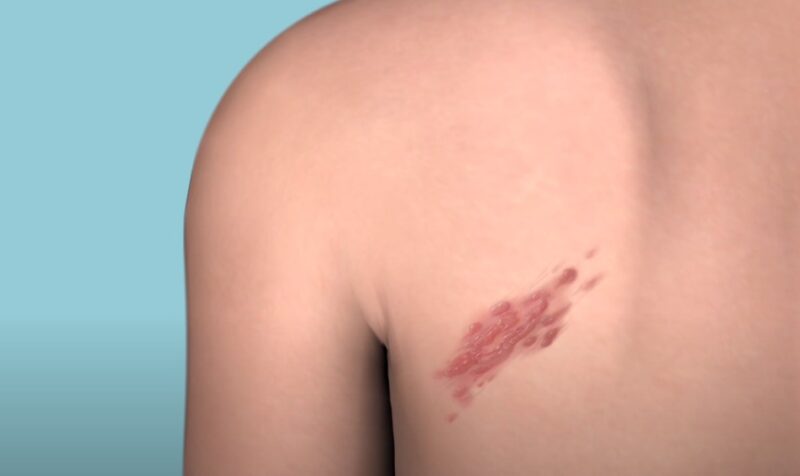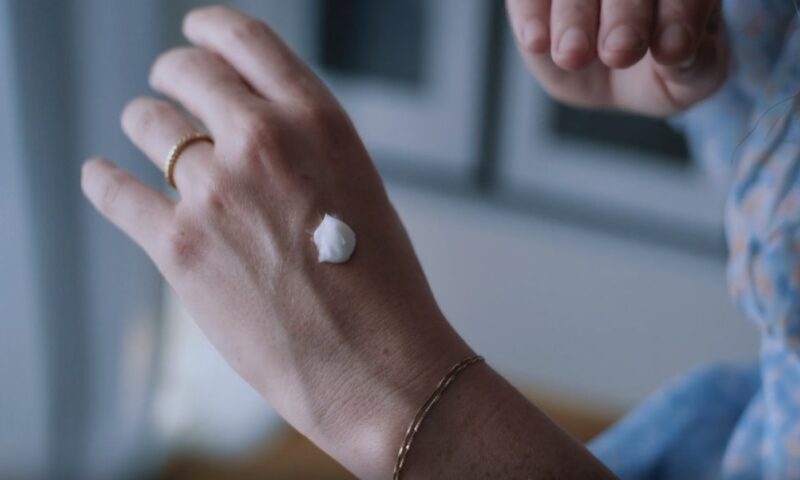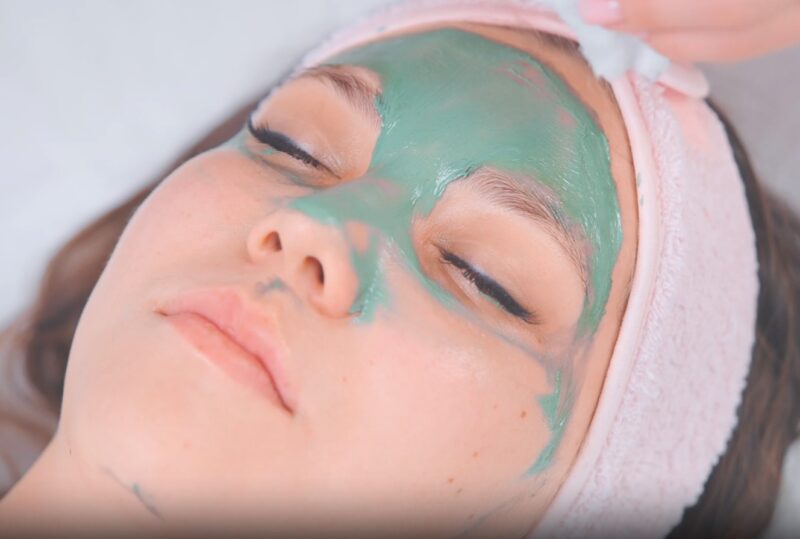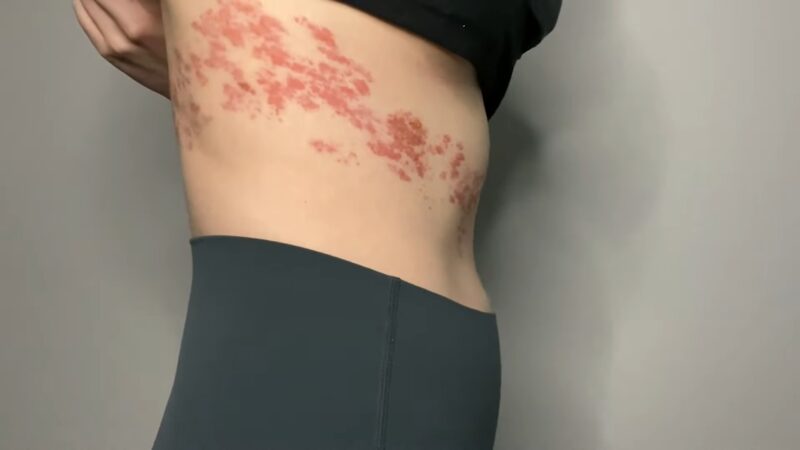Shingles, also known as herpes zoster, is an infection caused by the varicella-zoster virus. Although the primary symptom is a painful rash, it can sometimes lead to lasting scars. If you’re dealing with this problem, it is important to learn more about the best solutions.
The Basics
Shingles can cause blisters that, when they break open and crust over, may leave scars behind.
Why do scars form?

The body’s healing process is truly miraculous. When our skin sustains damage, our bodies rush to repair the site. However, this process isn’t always flawless, leading to scar tissue formation.
- When the skin is damaged, it produces more collagen to mend the wound.
- Sometimes, the newly formed skin isn’t as smooth or flexible as the original skin.
- In the case of shingles, the virus-infected skin cells cause inflammation and damage, increasing the chances of scarring.
Different types of scars
Understanding the type of scar you have can guide you towards the most effective treatment. Here are some common types that might result from shingles:
- Atrophic scars: Indentations left in the skin.
- Hypertrophic scars: Raised scars that don’t extend beyond the injury site.
- Keloid scars: Similar to hypertrophic but grow beyond the injury site.
Methods to Reduce Shingle Scars
![]()
Shingle scars can be unsightly and uncomfortable. Fortunately, numerous treatments can help reduce their appearance or eliminate them altogether.
Over-the-counter Treatments
There’s a myriad of creams, ointments, and gels available at your local pharmacy that promise scar reduction. Therefore, there is a chance that you can treat it in a similar way as pitting on your face.
- Silicone gel: This creates a protective barrier on the skin, keeping it hydrated and promoting healing.
- Hyaluronic acid: It hydrates the skin and can help reduce the depth of scars.
- Vitamin E: Known for its skin-healing properties, though results can vary.
Prescription Treatments
If OTC products aren’t cutting it, your dermatologist might suggest something stronger.
- Steroid injections: Especially useful for hypertrophic and keloid scars. They reduce inflammation and can flatten the scar.
- Retinoid creams: Promote cell turnover and can reduce the appearance of raised scars.
Laser treatments
Laser treatments can be effective in addressing both the color and texture of scars.
- Fractional lasers: These penetrate the top layer of skin and stimulate collagen production, smoothing out scars.
- Pulsed-dye lasers: Target the blood vessels in the scar tissue, potentially lightening the scar.
According to the American Academy of Dermatology:
“Early treatment can prevent complications like long-lasting nerve pain. Treatment options include antiviral medications, pain management, and self-care recommendations.”
The Natural Approach

Sometimes, nature offers its remedies. Many people have found success in reducing the appearance of their scars using more holistic methods.
Essential oils
Some essential oils have properties that can aid in scar reduction.
- Lavender oil: Known for its skin-healing properties and can reduce scar tissue.
- Tea tree oil: Its anti-inflammatory and antimicrobial properties can prevent scar formation and reduce existing ones.
- Frankincense oil: Can prevent scar tissue formation and reduce the appearance of existing scars.
Diet and hydration
What you consume can play a role in skin health.
- Stay hydrated: Keeping your skin hydrated can prevent scar formation and reduce the appearance of existing ones.
- Vitamin C: This essential nutrient aids in collagen production. Consider incorporating more citrus fruits, strawberries, and bell peppers into your diet.
- Zinc: Found in nuts, seeds, and whole grains, zinc can reduce scar formation.
Physical barriers
While this might seem simple, it’s essential.
- Sun protection: Direct sun exposure can darken the scar, making it more noticeable. Always apply sunscreen or cover the scar when outdoors.
- Avoid scratching: While shingles can be incredibly itchy, scratching can exacerbate scarring.
Prevention is Key

While treating scars is crucial, preventing them in the first place can save you from a lot of hassle and discomfort.
Early treatment of shingles
Acting quickly can reduce the severity of shingles and subsequently the scarring.
- Antiviral medications: If started within 72 hours of the first sign of shingles, these can decrease the duration and severity of the outbreak.
- Avoid picking: It’s tempting to pick at the blisters or crusts that form, but resist the urge. Doing so can lead to more severe scarring.
Moisturize and Protect
Keeping the affected area moist can reduce itching and prevent the formation of thick scabs, which can result in scars.
- Calamine lotion: This can provide relief from itching and help keep the skin moisturized.
- Petroleum jelly: It forms a protective seal over the affected area, preventing it from drying out.
Stay Informed
The most important thing to keep in mind is that you should follow advice and instructions only from well-known and credible resources.
- Educate yourself: The more you know about shingles and its progression, the better equipped you’ll be to handle it effectively.
- Join support groups: Talking to others who’ve experienced shingles can provide valuable insights and tips to prevent scarring.
Advanced Therapies and Procedures

When all else fails, or if you’re looking for faster results, advanced medical procedures can come to the rescue.
Chemical Peels
This involves applying a chemical solution to the scar to remove the top layers of skin, promoting new skin growth.
- Superficial peels: These are ideal for mild scars, using mild acids like alpha-hydroxy acid.
- Medium peels: Glycolic or trichloroacetic acids are used to penetrate the middle layers of skin. They’re effective for deeper scars.
Dermabrasion and Microdermabrasion
Both methods involve removing layers of skin.
- Dermabrasion: It’s a more intensive procedure where a dermatologist sands away the outer layers of skin with a special instrument.
- Microdermabrasion: A less aggressive approach where tiny crystals are sprayed onto the skin to remove its superficial layer.
Microneedling
A relatively newer method, it involves using fine needles to puncture the skin, prompting it to regenerate and heal.
- Collagen induction: The process stimulates collagen production, which can fill in the scar tissue.
- Reduced hyperpigmentation: Microneedling can also address discoloration associated with scars.
FAQs
How long does it typically take for shingle scars to fade on their own?
The duration for shingle scars to fade naturally can vary widely depending on the severity of the shingles outbreak, the individual’s skin type, and their age. Mild scars might start to fade within a few months, but more pronounced scars could take a year or more. Some scars might not fade completely without intervention.
Can shingles reoccur, and if so, will it always result in scars?
Yes, shingles can reoccur, although it’s less common to have multiple outbreaks. If the subsequent outbreaks are treated promptly and effectively, and if proper skincare measures are taken, scars may be minimized or even avoided altogether.
Does age affect the healing process and the likelihood of scarring from shingles?
Age can indeed influence the healing process. As we age, our skin loses elasticity and its regenerative abilities slow down. Consequently, older individuals might experience a slower healing process and a higher likelihood of scarring from shingles compared to younger individuals.
Are there any natural home remedies that can help reduce the itchiness associated with shingles?
Yes, several home remedies can offer relief from the itchiness caused by shingles. Oatmeal baths, cold compresses, and baking soda are some common remedies. It’s essential, however, to avoid scratching, as this can exacerbate the condition and increase the chances of scarring.
Last Words
While shingle scars can be frustrating, advancements in skincare and treatments offer hope for those looking to reduce or eliminate them. Remember to consult with a dermatologist before trying any new treatments, especially if you have sensitive skin or other medical conditions.

